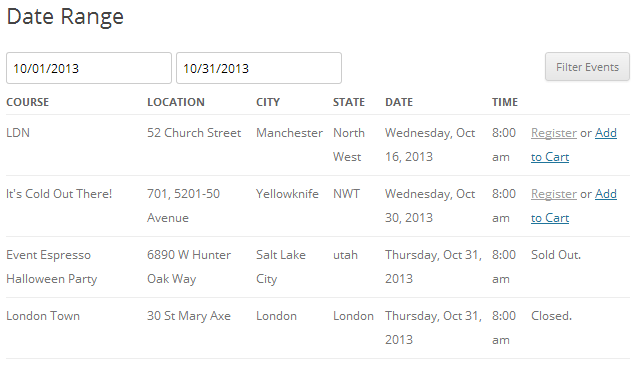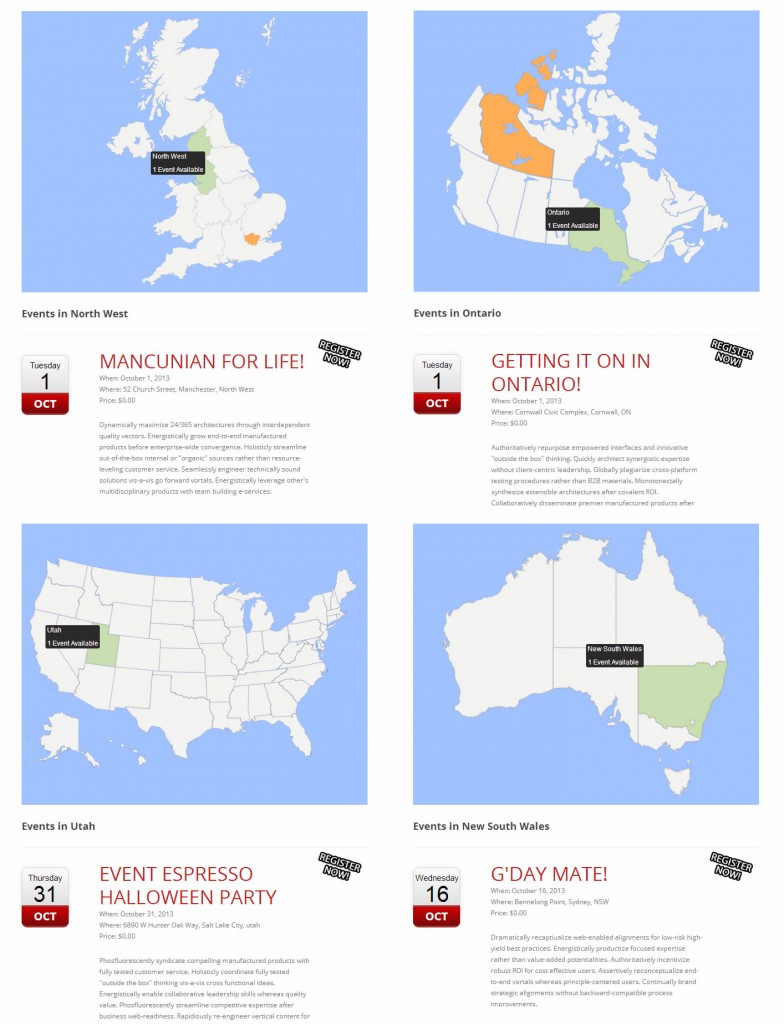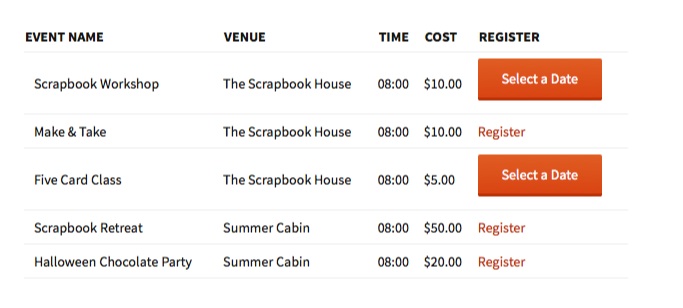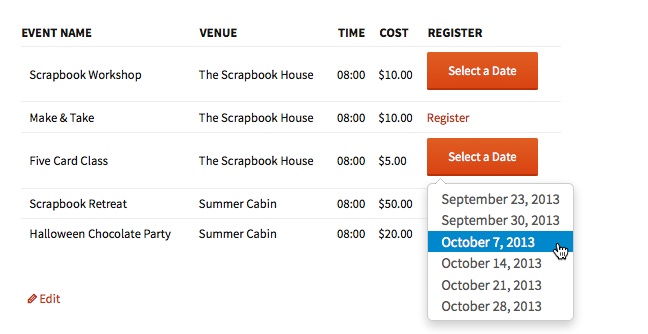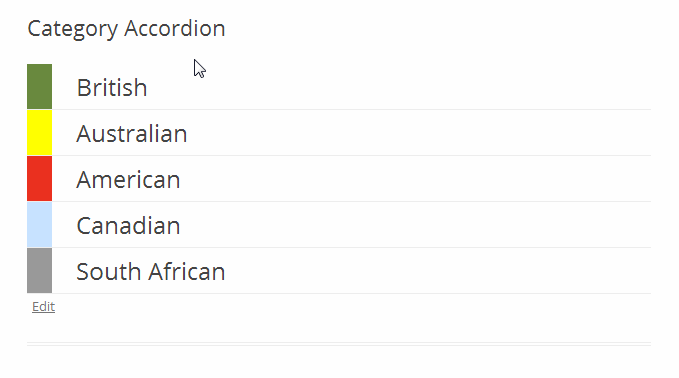In this guide, we’ll learn how to update Event Espresso 3 and how to update Event Espresso 5. We’ll also learn how to migrate from Event Espresso 3 to Event Espresso 5.
Before we get started, lets look at a few terms that will be used throughout this guide:
WP dashboard – this is the WP-admin for your WordPress site.
Update – this process will update your version of Event Espresso to the latest version for that platform.
Migrate – this process will move your site from Event Espresso 3 to Event Espresso 5.
Support License – this enables support services for a website such as help from the Event Espresso support team as well as software downloads and updates.
SFTP / FTP client – a software program (e.g. FileZilla, Cyberduck) that lets you transfer files between your computer and your WordPress site.
Update Event Espresso 3
The current platform for Event Espresso 3 is version 3.1.37.x. If you are using an older version, then your software is out of date and you’ll learn how to update your software to the latest version for Event Espresso 3.
Why bother updating? By staying up-to-date you’ll receive the latest bug fixes, enhancements, and ensure that Event Espresso 3 is compatible with the current version of WordPress.
Before making any changes, we recommend backing up your WordPress site. This is a good practice for any website. You can also see the change log for Event Espresso 3.
Enable Support Services for your Site
Members with active support license have access to support services including help from our support team as well as software downloads and updates.
A support license comes with at least one support license key which when activated on a site will enable support services for that site. The support license key can be found on your Event Espresso account page under Account Settings and can be enabled on your website by copying the support license key and then logging into your WordPress dashboard (WP-admin) and going to Event Espresso –> General Settings –> Support License (appears towards the end of the page). Then paste the support license key in the field and save changes by clicking on the Save Options button.
Update EE3 using one-click updates
Your website will automatically check for updates for Event Espresso 3 each day. When an update is available, then you’ll see an update notice for Event Espresso 3 and / or one of its add-ons (plugins) in the WordPress Plugins screen. The WP plugins screen can be found by logging into your WP-admin (WP dashboard) and then clicking on Plugins in the admin menus.
After backing up your WordPress site, you can go to each plugin and click on update now. Your WordPress site will then update the plugin and you’ll see a confirmation that the update process is complete.
Another way to update software for Event Espresso 3 (EE3) is through the Dashboard –> Updates screen in your WP dashboard. This page will show a list of plugins that have updates available. You can place a checkmark next to each plugin that you would like to update and then click on the Update Plugins button.
Update EE3 manually through the WP dashboard
Event Espresso 3 can be manually updated through the WP Plugins screen within your WP dashboard. The WP plugins screen can be found by logging into your WP-admin (WP dashboard) and then clicking on Plugins in the admin menus.
After backing up your WordPress site, you can go to each plugin for Event Espresso 3 and click to deactivate and then delete.
Now go to your Event Espresso account page on EventEspresso.com and then browse to the downloads area of your account. Click on each plugin that you would like to download and they will be saved to your computer as a zip file. Make a note of this location.
Return to the Plugins screen in your WordPress dashboard and click on Add New. Then on the next page, click on Upload Plugin. Click Choose File and browse to the zip file on your computer. Then start the upload process and wait for the confirmation that the upload has completed. Then if needed, upload additional zip files such as add-ons for Event Espresso 3 and then go back to the Plugins screen and activate Event Espresso 3 along with its add-ons.
Update EE3 manually using an SFTP / FTP client
Another method for updating Event Espresso 3 is to manually update by using an SFTP / FTP client such as Cyberduck and FileZilla. Updating through the WP dashboard is preferred and manually updating via SFTP / FTP can be used if your dashboard updates are not working due to a restriction by your web host. You can view recommended WordPress hosts for Event Espresso 3 on our requirements page.
Note: Overwriting existing files and folders is not recommended. Remove or relocate (described in step 3) old folders prior to uploading the newest software for Event Espresso.
Step 1 – Backup your website
Begin by backing up your WordPress site.
Step 2 – Download the latest software from your Event Espresso account
Login to your WordPress dashboard and then go to the WP Plugins screen. Deactivate all Event Espresso software that you would like to update.
Then go to your Event Espresso account page and then scroll to the Downloads area. Click on each item that you would like to download from the EE3 tab and they will be saved to your computer as a zip file. Make a note of the location for those file(s) on your computer as you’ll need them shortly.
Step 3 (Optional) – Relocate your old software to a backup folder
This step is not required and will allow you to keep a copy of your old plugin folders.
Now login to your site using your preferred SFTP / FTP client and then browse to the wp-content folder. This is the folder that has the themes and plugins folders for WordPress. If you would like to keep a copy of your old software for Event Espresso 3, then create a new folder called event-espresso-backup:
/wp-content/event-espresso-backup
Then browse to the WordPress plugins folder which will be in this location:
/wp-content/plugins
Using your SFTP / FTP client, transfer the old plugin folders for Event Espresso along with any add-ons to this location:
/wp-content/event-espresso-backup
Step 4 – Unzip your new software and upload to your website
Now you can upload the updated software which is on your computer as zip files. Browse to the location of those files and then unzip (ie. expand) them. Then transfer the each unzipped plugin folder to the WordPress plugins folder:
/wp-content/plugins
Here is an example of the location for the Event Espresso 3 core plugin:
/wp-content/plugins/event-espresso
Allow your SFTP / FTP client to complete all transfers and if there are any errors then try the transfer again.
Step 5 – Reactivate the software for Event Espresso 3
Return to your WordPress plugins screen and refresh it and then re-activate Event Espresso 3 along with any add-ons that may have been uploaded.
Update Event Espresso 5
The current release of Event Espresso 5 is:

If you are using an older version, then your software is out of date and you’ll learn how to update your software to the latest version for Event Espresso 5.
Why should you keep Event Espresso 5 updated? By staying up-to-date you’ll receive the latest bug fixes, enhancements, and ensure that Event Espresso 5 is compatible with the current version of WordPress.
Before making any changes, we recommend backing up your WordPress site. This is a good practice for any website. You can also see the change log for Event Espresso 5.
Enable Support Services for your Site
Members with active support license have access to support services including help from our support team as well as software downloads and updates.
A support license comes with at least one support license key which when activated on a site will enable support services for that site. The support license key can be found on your Event Espresso account page under Account Settings and can be enabled on your site by copying the support license key and then logging into your WordPress dashboard (WP-admin) and going to Event Espresso –> General Settings. Then paste the support license key in the field and save changes by clicking on the Save button.
Update EE5 using one-click updates
Your website will automatically check for updates for Event Espresso 5 each day. When an update is available, then you’ll see an update notice for Event Espresso 5 and / or one of its add-ons (plugins) in the WordPress Plugins screen. The WP plugins screen can be found by logging into your WP-admin (WP dashboard) and then clicking on Plugins in the admin menus.
After backing up your WordPress site, you can go to each plugin and click on update now. Your WordPress site will then update the plugin and you’ll see a confirmation that the update process is complete.
Another way to update software for Event Espresso 5 (EE5) is through the Dashboard –> Updates screen in your WP dashboard. This page will show a list of plugins that have updates available. You can place a checkmark next to each plugin that you would like to update and then click on the Update Plugins button.
Update EE5 manually through the WP dashboard
Event Espresso 5 can be manually updated through the WP Plugins screen within your WP dashboard. The WP plugins screen can be found by logging into your WP-admin (WP dashboard) and then clicking on Plugins in the admin menus.
After backing up your WordPress site, you can go to each plugin for Event Espresso 5 and click to deactivate and then delete.
Now go to your Event Espresso account page on EventEspresso.com and then browse to the downloads area of your account. Click on each plugin that you would like to download and they will be saved to your computer as a zip file. Make a note of this location.
Return to the Plugins screen in your WordPress dashboard and click on Add New. Then on the next page, click on Upload Plugin. Click Choose File and browse to the zip file on your computer. Then start the upload process and wait for the confirmation that the upload has completed. Then if needed, upload additional files such as add-ons for Event Espresso 5 and then go back to the Plugins screen and activate Event Espresso 5 along with its add-ons.
Update EE5 using an SFTP / FTP client
Another method for updating Event Espresso 5 is to manually update by using an SFTP / FTP client such as Cyberduck and FileZilla. Updating through the WP dashboard is preferred and manually updating via SFTP / FTP can be used if your dashboard updates are not working due to a restriction by your web host. You can view recommended WordPress hosts for Event Espresso 5 on our requirements page.
Note: Overwriting existing files and folders is not recommended. Remove or relocate (described in step 3) old folders prior to uploading the newest software for Event Espresso.
Step 1 – Backup your website
Begin by backing up your WordPress site.
Step 2 – Download the latest software from your Event Espresso account
Login to your WordPress dashboard and then go to the WP Plugins screen. Deactivate all Event Espresso software that you would like to update.
Then go to your Event Espresso account page and then scroll to the Downloads area and click on the EE4/5 tab. Click on each item that you would like to download and they will be saved to your computer as a zip file. Make a note of the location for those file(s) on your computer as you’ll need them shortly.
Step 3 (Optional) – Relocate your old software to a backup folder
This step will allow you to keep a copy of your old plugin folders.
Now login to your site using your preferred SFTP / FTP client and then browse to the wp-content folder. This is the folder that has the themes and plugins folders for WordPress. If you would like to keep a copy of your old software for Event Espresso 3, then create a new folder called event-espresso-core-reg-backup:
/wp-content/event-espresso-core-reg-backup
Then browse to the WordPress plugins folder which will be in this location:
/wp-content/plugins
Using your SFTP / FTP client, transfer the old plugin folders for Event Espresso along with any add-ons to this location:
/wp-content/event-espresso-core-reg-backup
Step 4 – Unzip your new software and upload to your site
Now you can upload the updated software which is on your computer as zip files. Browse to the location of those files and then unzip (ie. expand) them. Then transfer the each unzipped plugin folder to the WordPress plugins folder:
/wp-content/plugins
Here is an example of the location for the Event Espresso 3 core plugin:
/wp-content/plugins/event-espresso-core-reg
Allow your SFTP / FTP client to complete all transfers and if there are any errors then try the transfer again.
Step 5 – Reactivate the software for Event Espresso 5
Return to your WordPress plugins screen and refresh it and then re-activate Event Espresso 3 along with any add-ons that may have been uploaded.
Migrate from Event Espresso 3 to Event Espresso 5
A migration will transfer data such as events, venues, attendees/registrants and other information from Event Espresso 3 to Event Espresso 5. With that mentioned, not all information is migrated so its important to create a plan for your migration.
Want to skip the planning section below and see information on how to migrate? Click here to go directly to the Complete the Migration part of this guide.
Plan a Migration
Event Espresso 3 and Event Espresso 5 are different platforms. Information is stored in different database tables and there are some notable changes and things to be aware of.
Custom Coding
Coding changes that have been made for Event Espresso 3 will not be compatible with Event Espresso 5. This applies to custom functions that may have been added via a child theme’s functions.php / site specific plugin and/or changes to custom templates.
Changes in Admin Menus
The menus between the platforms are different. Here is an overview of those changes:
Event Espresso 3 menu –> Event Espresso 5 menu
General Settings –> General Settings (no change)
Event Overview –> Events
Venue Manager –> Venues
Questions –> Management / Registration Form / Questions
Question Groups –> Management / Registration Form / Question Groups
Categories –> Events / Categories
Calendar Settings –> Settings / Calendar
Promotional Codes –> Add-ons / Promotions
Email Manager –> Management / Messages
Template Settings –> Events / Templates
Payment Settings –> Settings / Payment Methods
Member Settings –> Management / Registration Form / User Integration Settings
Ticket Templates –> Management / Messages
MailChimp Integration –> Add-ons –> MailChimp
Social Media –> A social sharing plugin for WordPress can be used as events are now custom post types
Infusionsoft Settings –> Add-ons / Infusionsoft
System Status –> Extras / Maintenance / System Information
Help/Support –> Extras / Help & Support
API Settings –> Replaced with the REST API add-on
User Permissions –> Replaced with the Capabilities system
User Roles –> Replaced with the Capabilities system
Locales/Regions –> Replaced with the Capabilities system
Regional Managers –> Replaced with the Capabilities system
Changes in Registration Flow
Event Espresso 3: Information is collected via the registration form on the single event page –> Attendee/registrant pays for their registration (if applicable).
Event Espresso 5: An attendee/registrant begins registration by selecting an option from the ticket (pricing) selector. Then their information is collected and they can pay (if applicable).
Changes in Critical Pages
Some of the critical pages for Event Espresso are updated when a migration takes place. For clarity, we’ve included notes for all critical pages.
Event listings page (e.g. example.com/event-registration/)
[ESPRESSO_EVENTS] –> [ESPRESSO_CHECKOUT]
The events listing page becomes the registration checkout page by receiving an updated shortcode and a new virtual events listing page is available here: example.com/events/.
Thank you page (e.g. example.com/thank-you)
[ESPRESSO_PAYMENTS] –> [ESPRESSO_THANK_YOU]
The shortcode changes for the thank you page.
Registration cancelled (e.g. example.com/registration-cancelled/)
[ESPRESSO_CANCELLED]
There are no changes to the shortcode for this page.
Transactions page (e.g. example.com/transactions/)
[ESPRESSO_TXN_PAGE]
There are no changes to the shortcode for this page.
Changes in Shortcodes
Some shortcodes for Event Espresso 3 including those for the template add-ons have changed in Event Espresso 5. You can find updated and supported shortcodes on the following pages:
Shortcodes for Event Espresso 5
Shortcodes for the Events Calendar for Event Espresso 5 (new options/parameters available)
Shortcodes for the Events Table View Template for Event Espresso 5
Shortcodes for the Events Grid View Template for Event Espresso 5
If you cannot find a shortcode for Event Espresso 3 mentioned in one of the above pages, then it is not currently supported.
New Messages System
Event Espresso 5 introduces a messages system that handles messaging and notifications (e.g. registration approved, registration pending payment, registration declined, payment reminder, invoice and more). Custom messages from Event Espresso 3 are not migrated to Event Espresso 5. You should copy any existing custom emails into a plain text file so you can add it after the migration.
Discount/Promotion Codes
Existing discount codes for Event Espresso 3 are not migrated to Event Espresso 5. There is a promotions system available but existing discounts will not be transferred when a migration occurs.
Before we go through the steps for how to migrate from Event Espresso 3 to Event Espresso 5, we recommend that you also check out our common migration questions.
Complete the Migration
Step 1 – Backup your website
Begin by backing up your WordPress site.
Step 2 – Make sure that you are using a current version of Event Espresso 3
The migration process will need a current version of Event Espresso 3 to work correctly. Login to your WordPress dashboard (WP-admin) and go to Plugins. Then look for Event Espresso 3 in the list of plugins.
If your current version of Event Espresso 3 is less than 3.1.36.6 then you’ll want to update it first. If your version is newer, then go to step 3.
Deactivate your version of Event Espresso 3 through the plugins screen. Then click on Add New and then search for Event Espresso 3 lite in the search field. Then click on Install Now and confirm. Afterwards click on Activate. Then immediately return to the Plugins screen and deactivate and delete Event Espresso 3 Lite.
Step 3 – Download the latest software for Event Espresso 5 from your Event Espresso account
Login to your WordPress dashboard and then go to the WP Plugins screen. Deactivate all Event Espresso software.
Then go to your Event Espresso account page and then scroll to the downloads area and click on the EE5 tab. Click on each item that you would like to download and they will be saved to your computer as a zip file. Event Espresso 5 does not require any add-ons to run and it can operate on its own. Make a note of the location for those file(s) on your computer as you’ll need them shortly.
Step 4 – Deactivate Event Espresso 3
Login to your WP dashboard (WP-admin) and go to Plugins, then deactivate the Event Espresso 3 plugin. You’ll also deactivate all Event Espresso 3 add-ons.
Step 5 – Upload Event Espresso 5 to your WP dashboard
Login to your WP dashboard (WP-admin) and go to Plugins –> Add New –> Upload. Now browse to the zip file (e.g. event-espresso-core-reg.zip) for Event Espresso 5 on your computer and select it. Then start the upload process and allow it to complete.
Step 6 – Activate Event Espresso 5 and start the migration
Click on Activate and Event Espresso 5 will run through a few tasks internally and then switch itself into maintenance mode. At this point, you’ll see a notice to migrate. Click to go to the maintenance screen for Event Espresso 5. Then click the button to begin migrating your information to Event Espresso 5.
The migration runs in a few stages and you’ll see a confirmation after each stage. Click to continue after each stage has completed and finish all steps in the migration. Once it is done then Event Espresso 5 will take itself out of maintenance mode and you’ll be viewing the about page for Event Espresso 5.
Note: It is important that all stages of the migration be completed.
At this point, you can explore the various admin menus for Event Espresso 5.
Common Migration Questions
Are all features and add-ons in Event Espresso 3 available for Event Espresso 5?
All features and add-ons are not currently available in Event Espresso 5.
Examples include a Recurring Events Manager add-on and a Seating Chart add-on. See the our Event Espresso 3 vs Event Espresso 5 comparison page for more information and also check out our roadmap for Event Espresso 5.
Will you stop supporting Event Espresso 3?
There are no plans to stop supporting Event Espresso 3 in the near future. At this time, we plan to continue supporting Event Espresso 3 and encourage members that are interested in Event Espresso 5 to migrate. There are some exciting new features that will be available for Event Espresso 5 in the near future. Keep an eye on our Event Espresso 5 roadmap!
If I migrate to Event Espresso 5, then is my Event Espresso 3 information lost?
Event Espresso 5 creates its own database tables (ie. wp_esp_) when it is activated. A migration does not remove the database tables for Event Espresso 3 (ie. wp_events_). This means that your information will be there is you switch back to Event Espresso 3 in the future.
Can I run Event Espresso 3 and Event Espresso 5 at the same time?
No, only one version of Event Espresso can run at one time.
Can I use Event Espresso 3 add-ons with Event Espresso 5 and vice versa?
No, add-ons for Event Espresso 3 cannot be used with Event Espresso 5. Event Espresso 5 has its own add-ons available.
A developer helped me customize Event Espresso 3. Will those customizations work for Event Espresso 5?
Event Espresso 3 and Event Espresso 5 share a similar name but are different platforms. Information is stored in different database tables and the codebase is different. Custom coding (e.g. templates with customizations) for Event Espresso 3 will not work out of the box with Event Espresso 5 and will need to be updated.
Are there additional resources that I can provide my web professional / developer for help with upgrading my site?
Yes, here are some resources that you can provide to your web professional / developer:
Developer portal for Event Espresso 5
Theming for Event Espresso 5; Overview of starter templates for Event Espresso 5
Code snippet library for Event Espresso 5
How to create a payment gateway for Event Espresso 5
View more resources for developers in our developer center.
I’m unsure about migrating to Event Espresso 5. What should I do?
Follow up with us by creating a support post in our support forums and tell us about your project. We’ll share feedback to let you know if Event Espresso 5 will be a good fit.
Troubleshoot a Migration
My migration has crashed or become frozen. How can I get back on track?
Raise the memory that is available to PHP through and reduce the migration step size by adding the following constants towards the middle of your wp-config.php file:
define( ‘WP_MEMORY_LIMIT’, ‘128M’ );
define( EE_MIGRATION_STEP_SIZE, 10 );
Learn more about the suggestions above here: https://gist.github.com/lorenzocaum/78fc11939eefcff8a272




